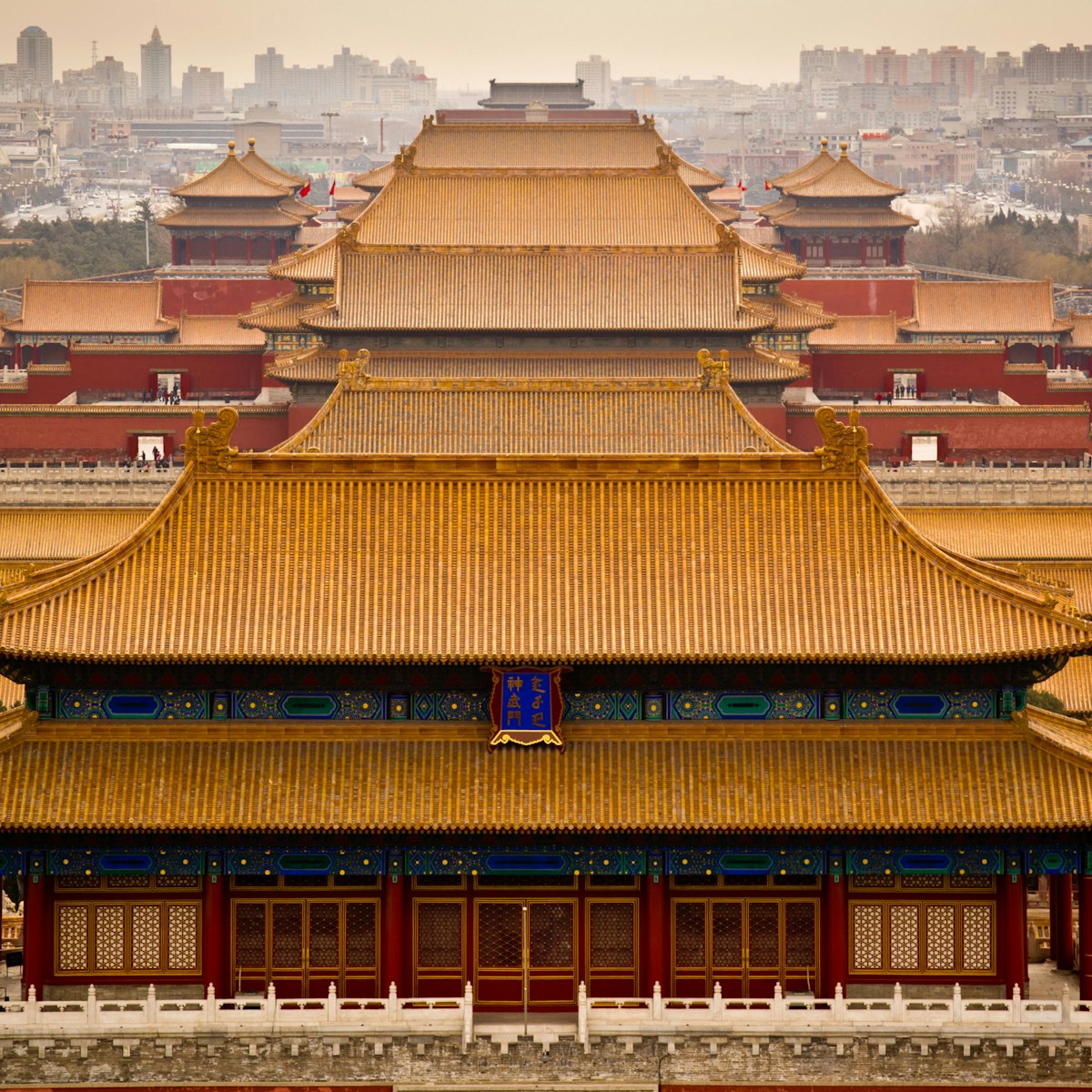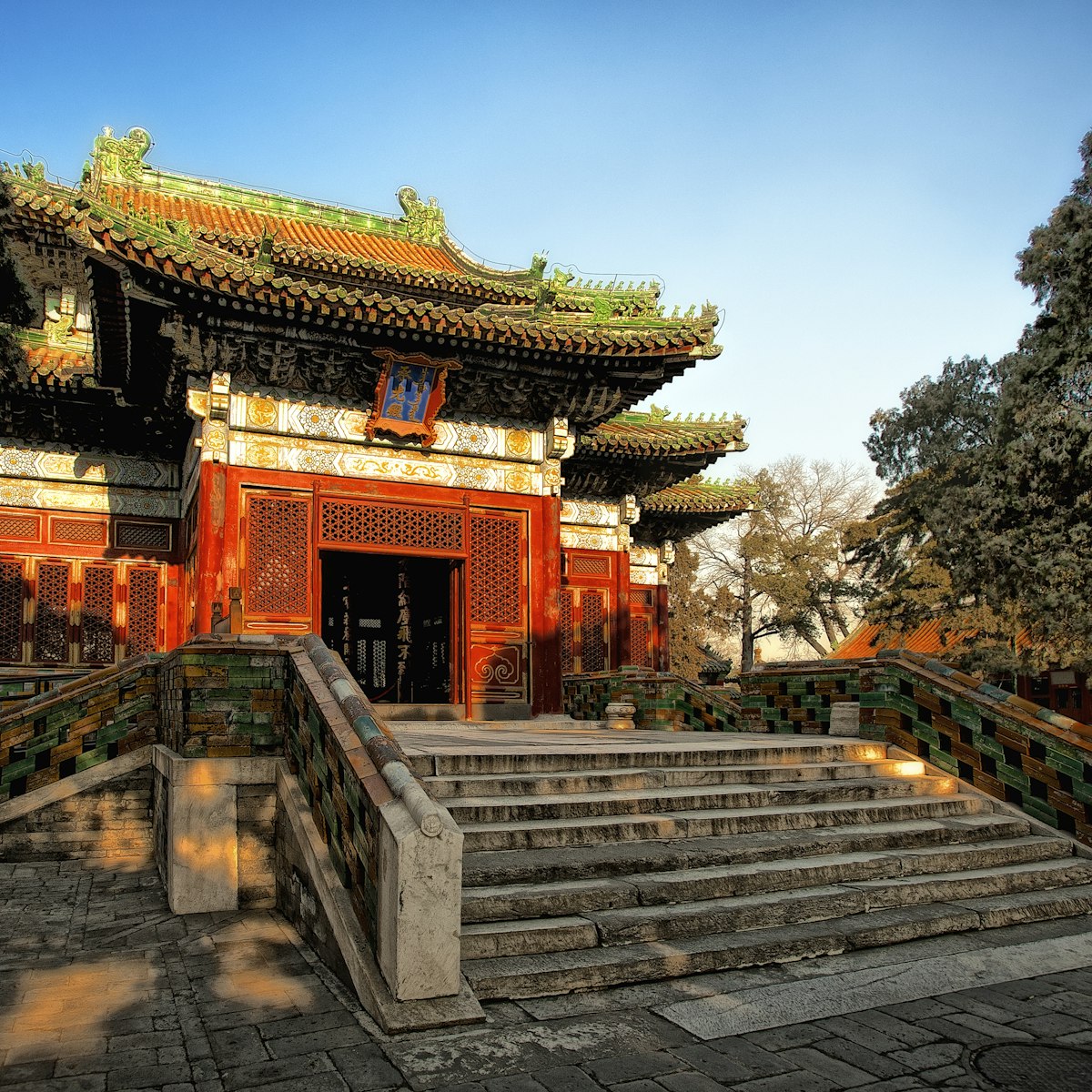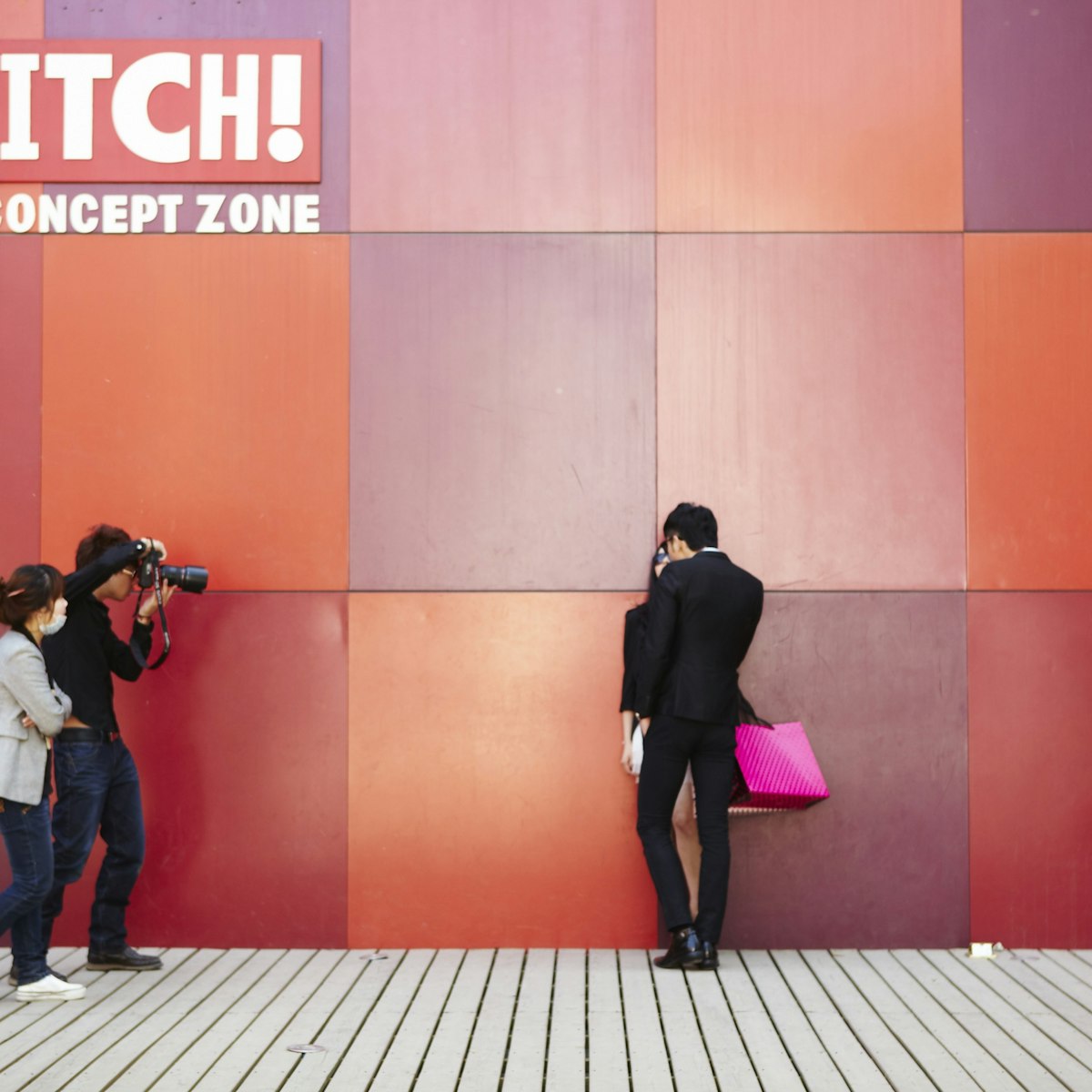The middle of the three outer halls, the Hall of Union was the place for the empress to receive greetings from her high-ranking subjects during major festivals. It contains a clepsydra – a water clock made in 1745 with five bronze vessels and a calibrated scale. The hall also has a mechanical clock built in 1797 and a collection of imperial jade seals on display.
Lonely Planet's must-see attractions

0.06 MILES
Enclosed by 3.5km of citadel walls at the very heart of Beijing, the Unesco-listed Forbidden City is China’s largest and best-preserved collection of…

2.89 MILES
An oasis of methodical Confucian design, the 267-hectare Temple of Heaven Park is unique. It originally served as a vast stage for solemn rites performed…

8.45 MILES
A marvel of Chinese garden design and one of Beijing's must-see attractions, the Summer Palace was the royal retreat for emperors fleeing the suffocating…

1.14 MILES
Flanked by triumphalist Soviet-style buildings, Tian'anmen Sq is an immense void of paved stone (440,000 sq metres, to be precise) at the symbolic centre…

0.69 MILES
Beihai Park, inside the old Imperial City, looks much as it would have done in the 18th century when it served as Emperor Qianlong's private gardens. The…

2.44 MILES
This immense fortress, part of the Ming City Wall Ruins Park, guarded the southeast corner of Beijing's city walls. Originally built in 1439 but repaired…

0.81 MILES
Instantly recognisable by its giant framed portrait of Mao, and guarded by two pairs of Ming dynasty stone lions, the double-eaved Gate of Heavenly Peace …

6.62 MILES
Contemporary art meets communist history at this thrilling enclave of international galleries installed within China's model factory complex of the 1950s…
Nearby attractions
1. Palace of Earthly Tranquillity
0.02 MILES
This palace was originally the residence of the empress, and in later times became the imperial couple’s bridal chamber (they only spent the first two…
0.02 MILES
This hall was the principal residence of the emperor in the Ming and early Qing dynasties, where the son of heaven slept and worked. Later in the Qing…
0.06 MILES
Enclosed by 3.5km of citadel walls at the very heart of Beijing, the Unesco-listed Forbidden City is China’s largest and best-preserved collection of…
0.06 MILES
At the northern end of the Forbidden City is the Imperial Garden, where emperors and their consorts could retreat to read, relax, sip tea and stroll among…
5. Palace of Eternal Longevity
0.06 MILES
One of the six western palaces in the Forbidden City, this was the residence of various empresses and imperial concubines. The Chongzhen Emperor (1628…
6. Palace of Great Benevolence
0.06 MILES
One of the six eastern palaces in the Forbidden City, this was a residence of imperial concubines. Emperor Kangxi, most exalted of the Qing emperors (or…
0.06 MILES
One of the six eastern palaces, this dates from 1420, and was used as a residence of imperial concubines. Today it houses a museum displaying a range of…
8. Palace of Gathered Elegance
0.07 MILES
This hall contains interesting photos of the last emperor Puyi, who lived here as a child ruler at the turn of the 20th century. Empress Dowager Cixi also…